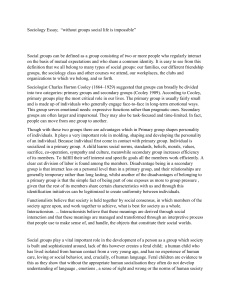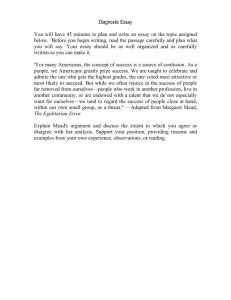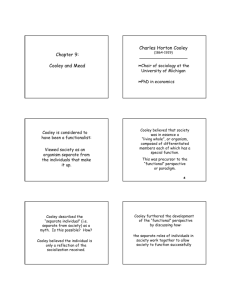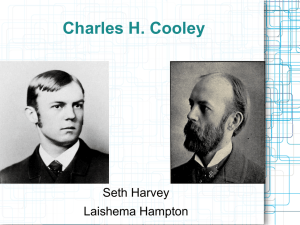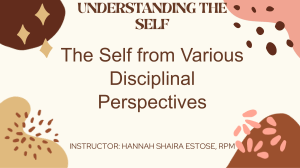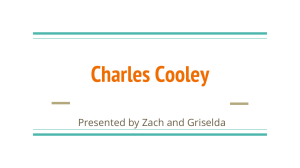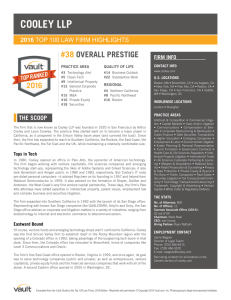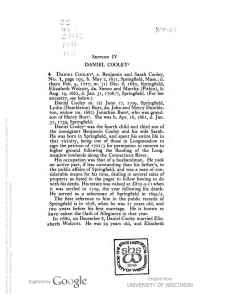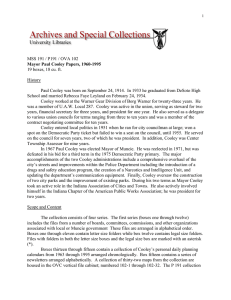Sociological Theories of Human Development
advertisement
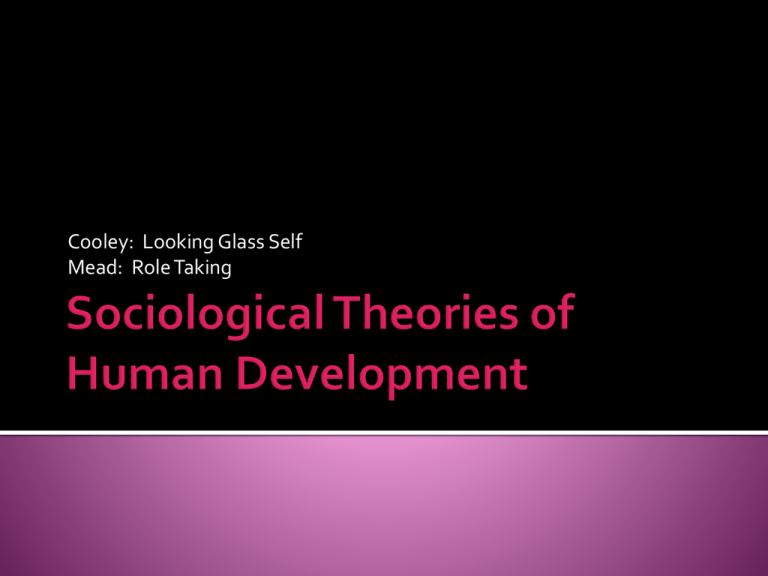
Cooley: Looking Glass Self Mead: Role Taking The four components of “self concept”: The physical self (I am tall) The active self (I am good at soccer) The social self (I am nice) The psychological self (I believe in world peace) This continues to change throughout our lives Both Charles Horton Cooley and George Herbert Mead were symbolic interactionists. They emphasized social constructionism: The perspective that human life is essentially social and that society itself is a product of collective construction or manufacture. Out self-identity is our perception about what kind of person we are. According to symbolic interactionists, we do not know who we are until we see ourselves as we believe others see us. We gain information about ourselves through interactions with others. The looking-glass self refers to the way in which a person’s sense of self is derived from the perceptions of others. 1. We imagine how our personality and appearance will look to other people. 2. We imagine how other people judge the appearance and personality we think we represent. (our perception) 3. We develop a self-concept. Our self-concept is either enhanced or diminished. The thing that moves us to pride or shame is not the mere mechanical reflection of ourselves, but an imputed sentiment, the imagined effect of this reflection upon another's mind." - CHARLES COOLEY An extension of Cooley’s ideas. Role-taking is the process by which a person mentally assumes the role of another person in order to understand the world from that person’s point of view. Significant others: are those persons whose care, affection, and approval are especially desired and who are most important in the development of the self. Generalized others: refers to the awareness of the demands of the society as a whole or of the child’s subculture. The “I” is the subjective element of the self that represents the spontaneous and unique traits of each person. The “me” is the objective element of the self, which is composed of the internalized attitudes and demands of other members of society and the individuals awareness of those demands. According to Mead both are needed to form the social self. http://www.youtube.com/watch?v=vwpTj_Z9 v-c&feature=related http://www.youtube.com/watch?v=8p5UBvC GYlU 1. Prepatory Stage 2. Play Stage 3. Game Stage AGES: Up to age 3 WHAT HAPPENS? Interactions lack meaning Children imitate those around them SIGNIFICANCE: Preparing for role taking AGES: 3-5 WHAT HAPPENS? Learn to use language/symbols Pretend to take the roles of others around them SIGNIFICANCE: Children begin to see themselves in relation to others. AGES: Begins in “early school years” WHAT HAPPENS? Children play games with rules and other players SIGNIFICANCE: Children understand their own positions and those around them Become concerned about the expectations and demands of others (society)…generalized others

